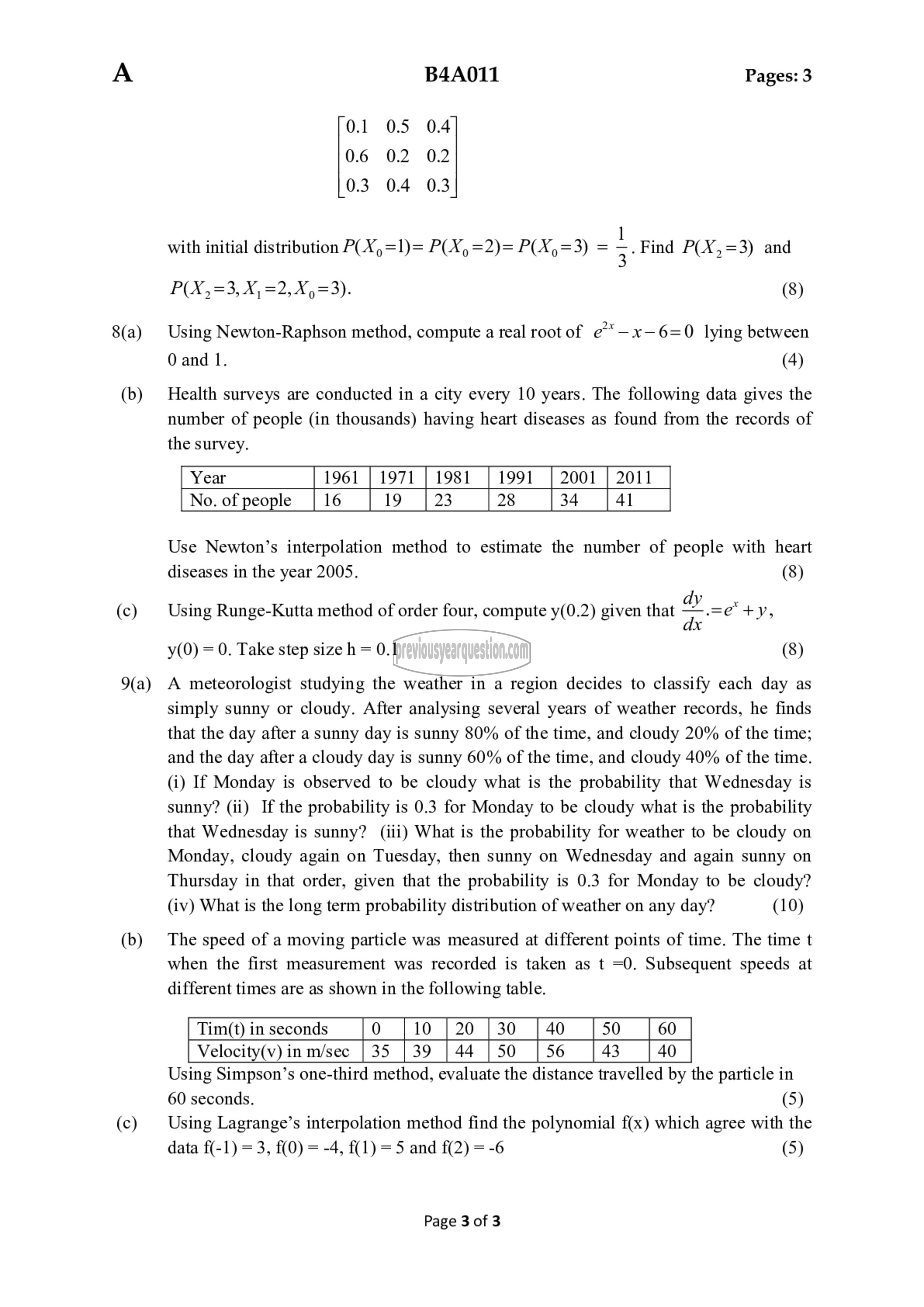APJ ABDUL KALAM TECHNOLOGICAL UNIVERSITY Previous Years Question Paper & Answer
Semester : SEMESTER 4
Year : 2017
Term : MAY
Scheme : 2015 Full Time
Course Code : MA 204
Page:3
8(a)
(b)
(c)
9(a)
(b)
B4A011 Pages: 3
0.1 0.5 0.4
0.6 0.2 0.2
0.3 0.4 0.3
1
with initial distribution (0 = 1) = P(X, =2)= P(X) = 3) = 7 Find P(X,=3) and
P(X, =3,X, ಎ2, ८0 = 3). (8)
Using Newton-Raphson method, compute a real root of e**—x—6=0 lying between
0 and 1. (4)
Health surveys are conducted in a city every 10 years. The following data gives the
number of people (in thousands) having heart diseases as found from the records of
the survey.
Tea
No. of people
Use Newton’s interpolation method to estimate the number of people with heart
diseases in the year 2005. (8)
d
Using Runge-Kutta method of order four, compute y(0.2) given that ane +y,
x
y(0) = 0. Take step size h = 0.1 (8)
A meteorologist studying the weather in a region decides to classify each day as
simply sunny or cloudy. After analysing several years of weather records, he finds
that the day after a sunny day is sunny 80% of the time, and cloudy 20% of the time;
and the day after a cloudy day is sunny 60% of the time, and cloudy 40% of the time.
(i) If Monday is observed to be cloudy what is the probability that Wednesday is
sunny? (ii) If the probability is 0.3 for Monday to be cloudy what is the probability
that Wednesday is sunny? (iii) What is the probability for weather to be cloudy on
Monday, cloudy again on Tuesday, then sunny on Wednesday and again sunny on
Thursday in that order, given that the probability is 0.3 for Monday to be cloudy?
(iv) What is the long term probability distribution of weather on any day? (10)
The speed of a moving particle was measured at different points of time. The time t
when the first measurement was recorded is taken as t =0. Subsequent speeds at
different times are as shown in the following table.
Tim(t) in seconds
Velocity(v) in m/sec [44 |
Using Simpson’s one-third method, evaluate the distance travelled by the particle in
60 seconds. (5)
Using Lagrange’s interpolation method find the polynomial f(x) which agree with the
data f(-1) = 3, £(0) = -4, (1) 5 and f(2) = -6 (5)
Page 3 of 3
